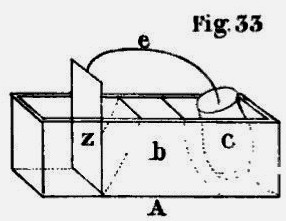Robert Were Fox the Younger facts for kids
Quick facts for kids
Robert Were Fox the Younger
|
|
|---|---|
 |
|
| Born | 26 April 1789 Falmouth, Cornwall, England
|
| Died | 25 July 1877 (aged 88) |
| Known for | Geophysical measurements Magnetic dip compass |
| Scientific career | |
| Fields | Mining, geology, geophysics |
Robert Were Fox (born April 26, 1789 – died July 25, 1877) was a British scientist and inventor. He studied rocks, the Earth, and how things work in nature. He is famous for studying the Earth's temperature deep underground. He also invented a special compass to measure magnetic forces at sea.
Contents
Early Life and Family
Robert Were Fox was born on April 26, 1789, in Falmouth, Cornwall, England. He was the oldest son of Robert Were Fox and Elizabeth Tregelles. His family were Quakers, a religious group known for their simple lifestyle.
In 1814, Robert married Maria Barclay. They had three children: Anna Maria, Barclay, and Caroline. Both Caroline and Barclay kept journals that were later published. Robert Were Fox died on July 25, 1877. He was buried in the Quaker Burial Ground in Budock.
Family Business Interests
Robert Fox was involved in his family's businesses. He worked alongside his brothers in various ventures. From 1819 to 1854, he also served as the Honorary Consul for the USA in Falmouth. This meant he helped American citizens and businesses in the area.
In 1812, Fox and Joel Lean received a special permission called a patent. This patent was for their improvements to steam engines. They made these engines work better and more efficiently.
Gardens and Plants
Robert Fox loved plants and gardening. His gardens at Rosehill and Penjerrick, near Falmouth, became very famous. He and his son, Barclay, grew many unusual plants from other countries. They helped these plants grow well in the English climate. Today, both gardens are open for people to visit.
Scientific Discoveries
Robert Fox's scientific work was in a field now called geophysics. This is the study of the Earth's physical processes. He was well-known for his research on the temperature inside the Earth.
Starting in 1815, he spent 40 years observing temperatures in Cornish mines. He was the first to clearly show that the Earth's temperature gets hotter the deeper you go. This is known as the geothermal gradient.
In 1829, he started experiments to create tiny metal veins artificially. He used electric currents over a long time to do this. His main findings were published in 1836.
In 1834, Fox created a better version of a special compass. This compass, called a dip circle, could measure magnetic dip. Magnetic dip is how much a compass needle points down towards the Earth. One of his compasses was used by Sir James Clark Ross on his trip to Antarctica. It helped him find the exact location of the South magnetic pole.
Fox was also very important in starting the Royal Cornwall Polytechnic Society. This group helped promote science and training. He was also an active member of the British Association for the Advancement of Science.
Robert Were Fox, his cousin George Croker Fox, and his brother Alfred Fox collected many excellent minerals. These collections are now kept at the British Museum.
Honors and Activities
- Fellow of the Royal Society: Robert Were Fox was chosen to be a member of the Royal Society on September 9, 1848. This is a very old and respected group of scientists. The Society still has many letters that were sent to Fox and his family.
Selected Writings
Robert Were Fox wrote many scientific papers. Here is a short list of some of his works:
- A Catalogue of the Works of Robert Were Fox, F.R.S., with a Sketch of his Life (1878), by J. H. Collins, Truro, Lake & Lake.


